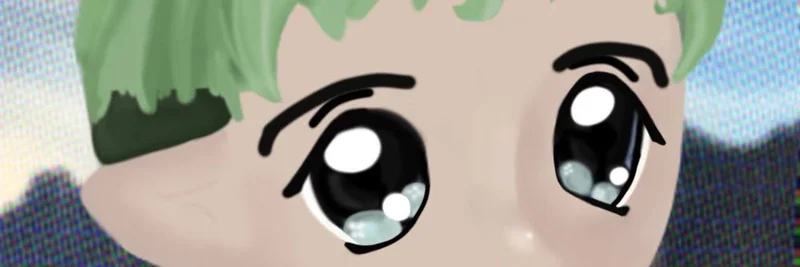Have you ever stumbled upon a corner of the internet that feels like it's brewing something world-changing? That's the vibe I got from a recent tweet by @apralky, a rates trader diving deep into markets and hyperreality. In this post, he shares his first encounter with the Remilia and Milady lore, and it's a fascinating reflection on how small, intense online ecosystems can produce memes with explosive cultural power.
For those new to this, Milady Maker is a collection of 10,000 Ethereum-based NFTs launched in August 2021 by Remilia Corporation, an avant-garde art collective. These aren't your average profile pictures—they're cute, anime-style girls with a twist of streetwear aesthetics, often featuring big, teary eyes and vibrant colors. The project draws from Japanese kawaii culture but has a distinctly New York edge, blending digital art with themes of network spirituality and online identity. Remilia, led by the pseudonymous Charlotte Fang, positioned Milady as more than just art; it's a memetic movement, a "cult" in the playful yet intense sense, fostering a community that's equal parts creative and controversial.
What makes the lore so "moving," as @apralky puts it? It's the story of creation in isolation. Remilia started in private Twitter DMs and Discord channels, where a group of hyper-focused individuals—think high-IQ creatives with a knack for internet chaos—crafted something that resonated deeply. The NFTs embody "neo-chibi" aesthetics, but the real magic is in the philosophy: embracing the chaos of online life, turning fringe ideas into mainstream vibes. There was drama too—revelations about Fang's past ties to edgy online groups caused a stir in 2022, tanking the floor price temporarily. Yet, the community bounced back, launching the $CULT memecoin in 2024, which ties directly into meme token territory by leveraging that same memetic energy.
@apralky nails it when he compares these ecosystems to "nuclear grade memetic superweapons." Back in the day, places like 4chan were seen as noisy fringes, pumping out garbage with no real impact. But fast-forward, and we're seeing how these closed loops of "3std intelligence hyperautists" (his words, meaning super-smart, autism-spectrum folks excelling in niche obsessions) create ideas that spread like wildfire. Milady PFPs (profile pictures) aren't just cute; they're sleeper agents, turning normies into fans and influencing everything from fashion to crypto trends.
He points out the timeline: In the mid-2020s, only about 15% of global GDP is online, with power still in the hands of TV-era boomers. But imagine 2030 or 2040, when everyone's plugged in. A killer aesthetic or meme could literally conquer minds on a global scale. Trump showed a pre-digital version of this, but digital natives are taking it to hyperreality levels. Millennials birthed Milady in 2020, shaping a chunk of the world—@apralky notes 30% of his followers rock those PFPs. Zoomers are doing it bigger, with meme tokens like $CULT riding the wave.
This ties perfectly into the meme token world. Projects like Milady demonstrate how strong community lore can drive token value. $CULT, for instance, isn't just a coin; it's an extension of the Milady cult, using memetics to build hype and liquidity. In blockchain, where attention is currency, these superweapons can turn a niche idea into a billion-dollar market cap overnight. It's a reminder for practitioners: Study the lore, build the community, and watch the memes do the heavy lifting.
The replies to the tweet echo the cult-like devotion—simple "Milady" affirmations, questions about the lore, even a clever etymology tying it to "Return to God." It's proof of the sleeper agent effect in action.
If you're in crypto or just curious about digital culture, dive into Milady lore yourself. It's not just art; it's a blueprint for how memes will shape our future. What's your take—have you felt the pull of a similar online ecosystem? Share in the comments below!



